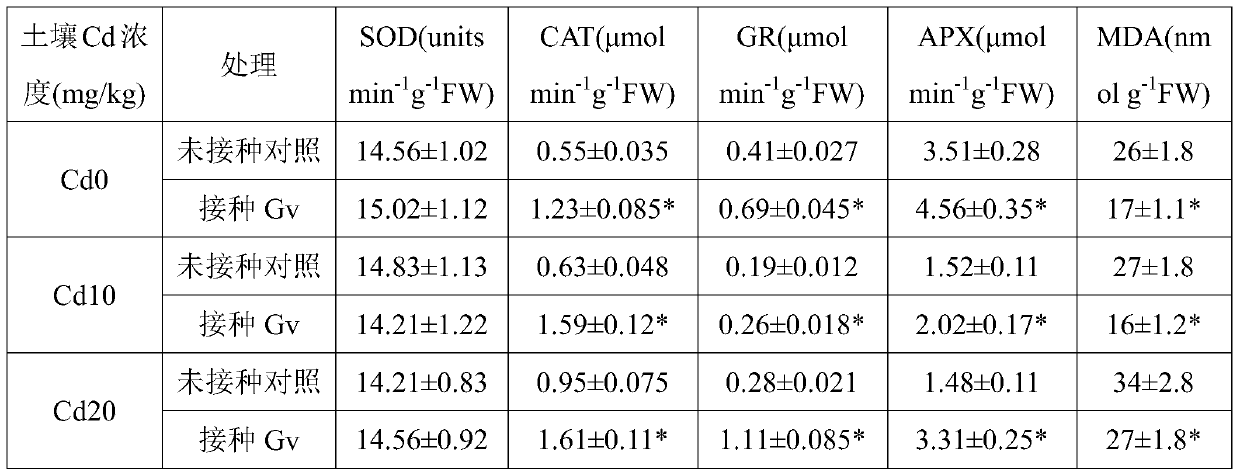A method of reducing the accumulation of cadmium in honeysuckle and increasing its yield by using Glomus terrescens
A technology of Glomus terrestrialis and honeysuckle, which is applied in the direction of microorganism-based methods, botany equipment and methods, biochemical equipment and methods, etc., can solve the problems of reducing the accumulation of cadmium in honeysuckle, achieve the improvement of mineral nutrition status, Secondary pollution, good effect
- Summary
- Abstract
- Description
- Claims
- Application Information
AI Technical Summary
Problems solved by technology
Method used
Image
Examples
Embodiment 1
[0045] 1. Propagation and culture of test strains and preparation of bacterial agents
[0046] Glomus versiforme (Gv for short) BGC GD01C provided by Institute of Plant Nutrition and Resources, Beijing Academy of Agriculture and Forestry Sciences.
[0047] After using corn (Zea mays) as a host plant for potted propagation, the mixture containing host plant root segments, fungal hyphae, mycorrhizal fungal spores and potting soil is used as an inoculant. The specific process is as follows:
[0048] Fill the sterilized sand (according to the weight ratio, sand:soil=1:1) culture medium to 4 / 5 of the plastic basin. According to the inoculum amount of 4% (w:w), the Glomus terrescens inoculant was evenly spread on the substrate as a thin layer. Then cover the sterilized substrate 2cm, water, sow 10-15 corn seeds / pot. Cover with 0.5cm sterilized substrate, and then move to the greenhouse for cultivation.
[0049] Harvest after 5 months of potting. When harvesting, first cut off t...
PUM
 Login to View More
Login to View More Abstract
Description
Claims
Application Information
 Login to View More
Login to View More - R&D
- Intellectual Property
- Life Sciences
- Materials
- Tech Scout
- Unparalleled Data Quality
- Higher Quality Content
- 60% Fewer Hallucinations
Browse by: Latest US Patents, China's latest patents, Technical Efficacy Thesaurus, Application Domain, Technology Topic, Popular Technical Reports.
© 2025 PatSnap. All rights reserved.Legal|Privacy policy|Modern Slavery Act Transparency Statement|Sitemap|About US| Contact US: help@patsnap.com



